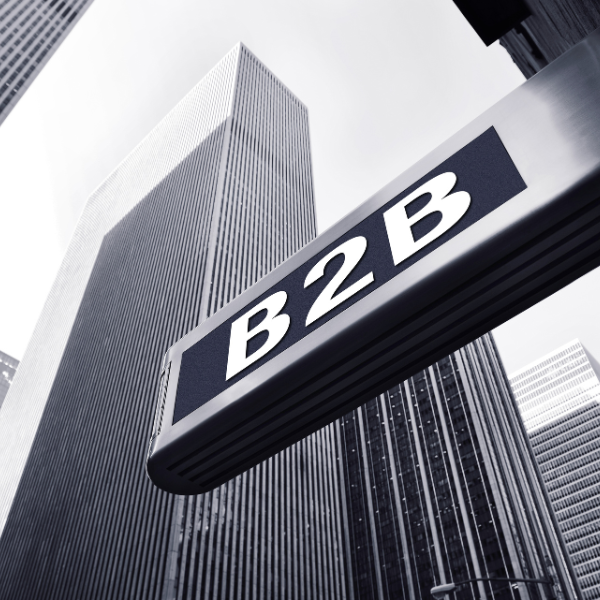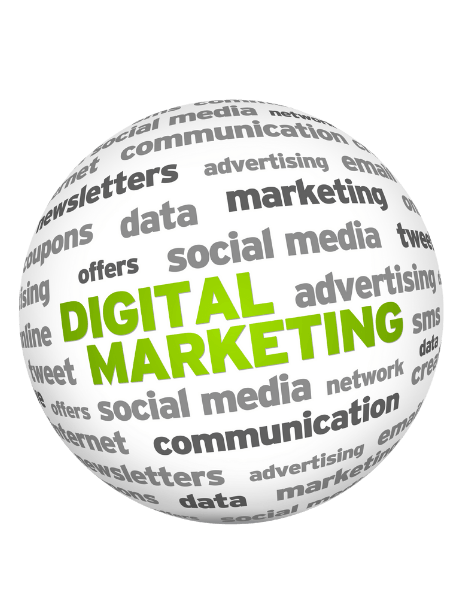CALL US TODAY! (404) 850-8333
The Ultimate Guide to Creating a Successful Landing Page

A landing page helps you collect leads when you're promoting a product or service. Its purpose is to convince visitors to submit their details, often using an incentive, such as a free ebook or webinar. Having just one page to optimize might seem like a breeze, but a lot can go into creating a landing page that converts.
You only have a single page to convince people to give you their email address or other details, which can be a big ask. A successful landing page needs to get your audience's attention and display the right messaging. Around half of marketers build a new landing page for each campaign, but many still get it wrong. And if you’re a business owner trying to do it without the help of a marketing agency, it’s even more difficult. How can you get it right?
Well, a lot goes into good landing page design. Each element on the page needs to capture the attention of your audience and lead them toward your form. When people land on your page, everything should convince them to stay there and to take the next step.
However, landing pages are also relatively simple compared to other pages, such as a home page. They are focused on achieving one goal, turning your visitors into leads and even customers. When designing a landing page, there are many things that you can do to ensure it's as successful as possible, converts, and gets you results that you want.
Understand Your Audience
A good understanding of your audience is a must if you want to succeed in landing page creation. If you don't know who your audience is, you can't craft your messaging and design to appeal to them. There are several steps that you might take to make sure you have an understanding of your audience.
Firstly, you should do some market research if you haven't already. Hopefully, you have some knowledge of your target market and who you are targeting. Another task that you can complete before designing your landing page is creating buyer personas. You might already have these for other marketing purposes.
In case you're not familiar, a buyer persona is a fictional profile that sums up the customer you are targeting. You might have a number of buyer personas that represent the different people in your audience. Having buyer personas enables you to take the data and statistics that you have and turn them into people that are easier to relate to. They can include information such as job titles, age, family status, interests, and other information that is relevant to your audience.
When you have your buyer personas prepared, you can use them to create a landing page that is designed to appeal to your audience.
Create an Offer
Every successful landing page requires a good offer. You need to give people something that is valuable to them, and in return, you will get their details.
To start with, you need to have the right offer to act as an incentive. What will appeal to your audience and convince them to give you their email address or other personal details? It's important to know your audience well so that you can work out what they want and how you can give it to them. Are they more likely to download an ebook or to sign up for a short course? Try looking at your most popular content to see what your visitors tend to gravitate towards. This can help you to create an offer that's effective. A landing page should have just one offer.
Of course, you also need to display your offer prominently on your landing page. It's important for it to be the only action on the page that your visitors can take. You don't want them to be distracted by other things that could pull their attention away from what you most want them to do. Each visitor will have the option to take the offer or to leave it, rather than having to choose from different options. In terms of design, plenty of space around your offer ensures the focus is on it and not elsewhere.
Start Strong with a Good Headline
Of the several elements that go into a successful landing page, the headline is one of the most important. Unbounce points out that the headline must match what the visitor clicked on to land on the page. They don't want to feel like they have been tricked or anything has been misrepresented.
The headline is the first thing that your visitors will see, and it will be a prominent element on your page. It needs to sum up what you have to offer in concise words, making sure that visitors know what they will gain. It should be direct and punchy, clearly outlining your offer. A subheading can also be useful to expand on your offer, but it's not always necessary
Ensure Copy With the Right Messaging
In addition to your headline, the rest of the copy on your landing page also needs to convince visitors of your offer. Business owners often find it difficult to get the right expertise to write their landing page copy. However, there are people who are experienced and know what they're doing with landing page copy. What's more, you could know your audience and how to write for them better than anyone.
Your landing page copy shouldn't be paragraphs of text. It should be tightly focused on what you are offering your visitors. It might include some snappy benefits or features that expand on the value that you bring to your customers. This type of supporting copy helps to shore up the other elements on your page and provide more persuasive information for your visitors. Tell visitors how you're going to solve their problems and the benefits that you bring them. Consider using SEO AI tools for content opportunities.
Design Visual Elements
Your landing page also needs to look good and might have some eye-catching visual elements. An attractive landing page doesn't have to have a lot going on. It is likely to have a lot of whitespace so that there is nothing distracting. All of the visual elements on your page should be carefully chosen, whether they are images or videos, and should be perfectly aligned with your company branding. The visual elements that you use should also help to convince visitors of the value of your offer. How will things change for them once they have taken you up on their offer?
Visual elements can help customers to visualize what you're offering them. This is vital when you are trying to collect leads online because your product or service can't be touched or seen in person.
The Right Form Fields
The form fields that you have on your landing page need to be considered carefully. One thing to consider is whether your landing page has a single-step form or if there are two (or even more) steps required to get your offer. You might begin with a single field, such as an email field, that then leads to the option to enter more details. Alternatively, you might just have a single form that collects all information at once. Try to keep the average number of fields on your page at four.
Knowing which fields to include in your form is important, too. Just having an email field is one option, but you might want to also collect essential information such as names. One thing to avoid is age, which reduces conversion rates. Focus on getting the most important information, and don't make your visitors do too much work. If they feel that some form fields are unnecessary, they won't bother.
Include Testimonials
Social proof is a key element of many successful landing pages. It allows you to show visitors what they have to gain from your offer, not in your words, but in the words of people who have already benefited from your products or services. People are more likely to take action if they can see that people like them can vouch for the product or service that they are considering.
Social proof can take on a few different formats, which you can use differently depending on who your audience is. You might have quotes from clients or customers in written form, or perhaps videos of reviews or testimonials. Case studies can show people what you have done with previous customers, or you might simply display the logos of businesses that you have worked with. Ratings from review sites also offer a quick way to demonstrate what your customers think of you.
Focus on the CTA
Another vital piece of text on your landing page is the call to action or CTA. More than 90% of visitors to a landing page who read the headline also read the CTA text, making these two pieces of copy potentially the most important. The CTA is the final piece of copy that convinces people to click and convert. There should be just one call to action, keeping the focus on the one thing that you want people to do. Make sure to spend lots of time creating the right CTA.
Some of the common advice includes avoiding generic text on your CTA button or link, such as "click here." Instead, try to use conversational language that invites your audience to do something, such as "download my free ebook." Remember to include a privacy statement and ensure your form and the data you collect and record comply with GDPR if your website is available in the European Union. When you are trying to find the perfect call to action, it's smart to use A/B testing to find out what works best.
Use A/B Testing
AB landing page testing can be used to help you design the perfect landing page and optimize conversion rates. When you use A/B testing, you present one page to some people and a different page to others. This allows you to record the results that you get and see what works best. However, it's not a good idea to do this with two completely different pages. You might find out that one page outperforms the other, but what exactly is it about the better page that works?
It's best to change just one element of your landing page if you want to test out different approaches. Change the call to action or the headline, for example, and see which page converts best. It's important to collect plenty of data so that you can ensure you have an accurate picture of how to get the best conversion rate.
Use A/B Testing
AB landing page testing can be used to help you design the perfect landing page and optimize conversion rates. When you use A/B testing, you present one page to some people and a different page to others. This allows you to record the results that you get and see what works best. However, it's not a good idea to do this with two completely different pages. You might find out that one page outperforms the other, but what exactly is it about the better page that works?
It's best to change just one element of your landing page if you want to test out different approaches. Change the call to action or the headline, for example, and see which page converts best. It's important to collect plenty of data so that you can ensure you have an accurate picture of how to get the best conversion rate.
The design of your page makes a difference too. Poor design can quickly turn people away. It's also important to think about speed. A slow landing page can mean bad results. People aren't willing to wait around for your page to load, and it can affect how your landing page ranks in search results too. A one-second delay in loading time can reduce conversions by 7%.
A successful landing page might look simple when it's finished, but a lot goes into creating a page that works. Don't rush the creation of your landing page, and get help from experts if you want to make sure it will convert.
At ClickReady Marketing, we can provide you with all of the tools you need for a successful marketing campaign, from Georgia SEO services to PPC management and even the building of landing pages. Get in touch with us today to find out more about our digital marketing services!
LOCATIONS
CORPORATE OFFICE / MAILING ADDRESS
131 PROMINENCE CT. STE 210,
DAWSONVILLE, GA 30534
CUMMING SEO OFFICE:
410 PEACHTREE PARKWAY, BUILDING 400 SUITE 4245 CUMMING, GA 30041
Phone: 404-850-8333
ATLANTA SEO OFFICE:
1155 MT. VERNON HIGHWAY NE, SUITE 800,
ATLANTA, GA 30338
Phone: 678-820-7407
ALPHARETTA SEO OFFICE
5815 Windward Pkwy, Ste302
Alpharetta, GA.
Phone: 404-923-0015
ALSO PROVIDING:
QUICK LINKS
All Rights Reserved | Click Ready Marketing




